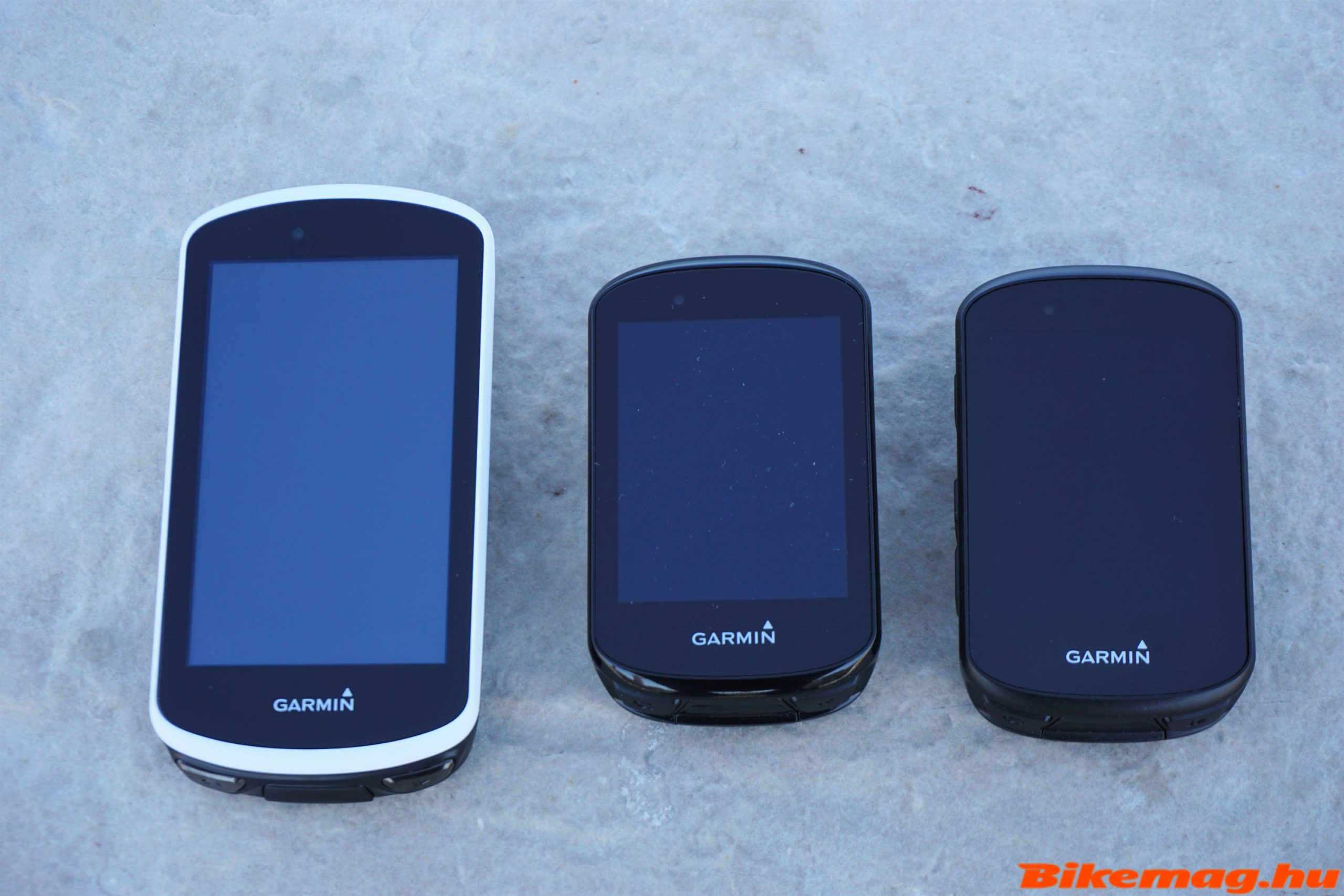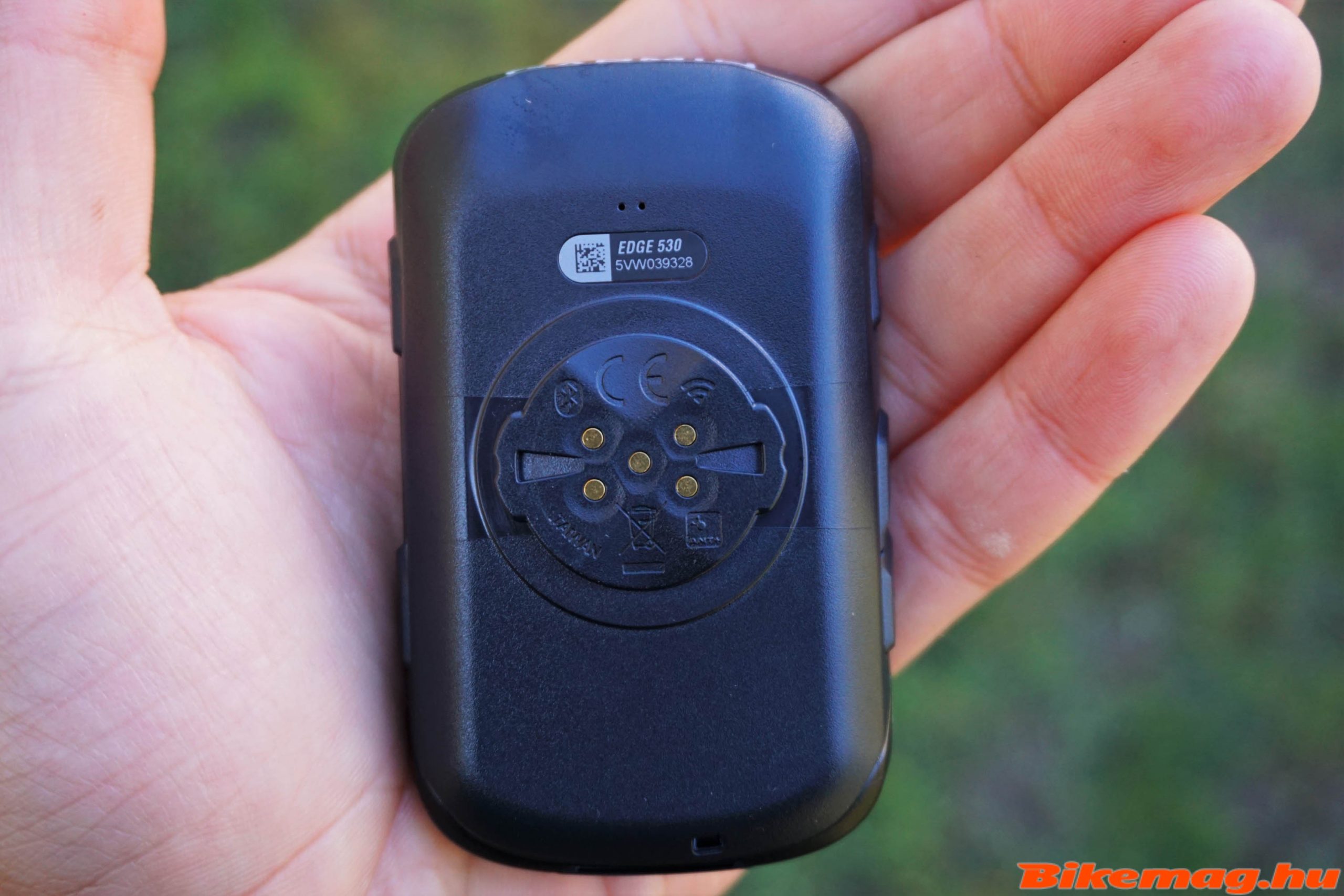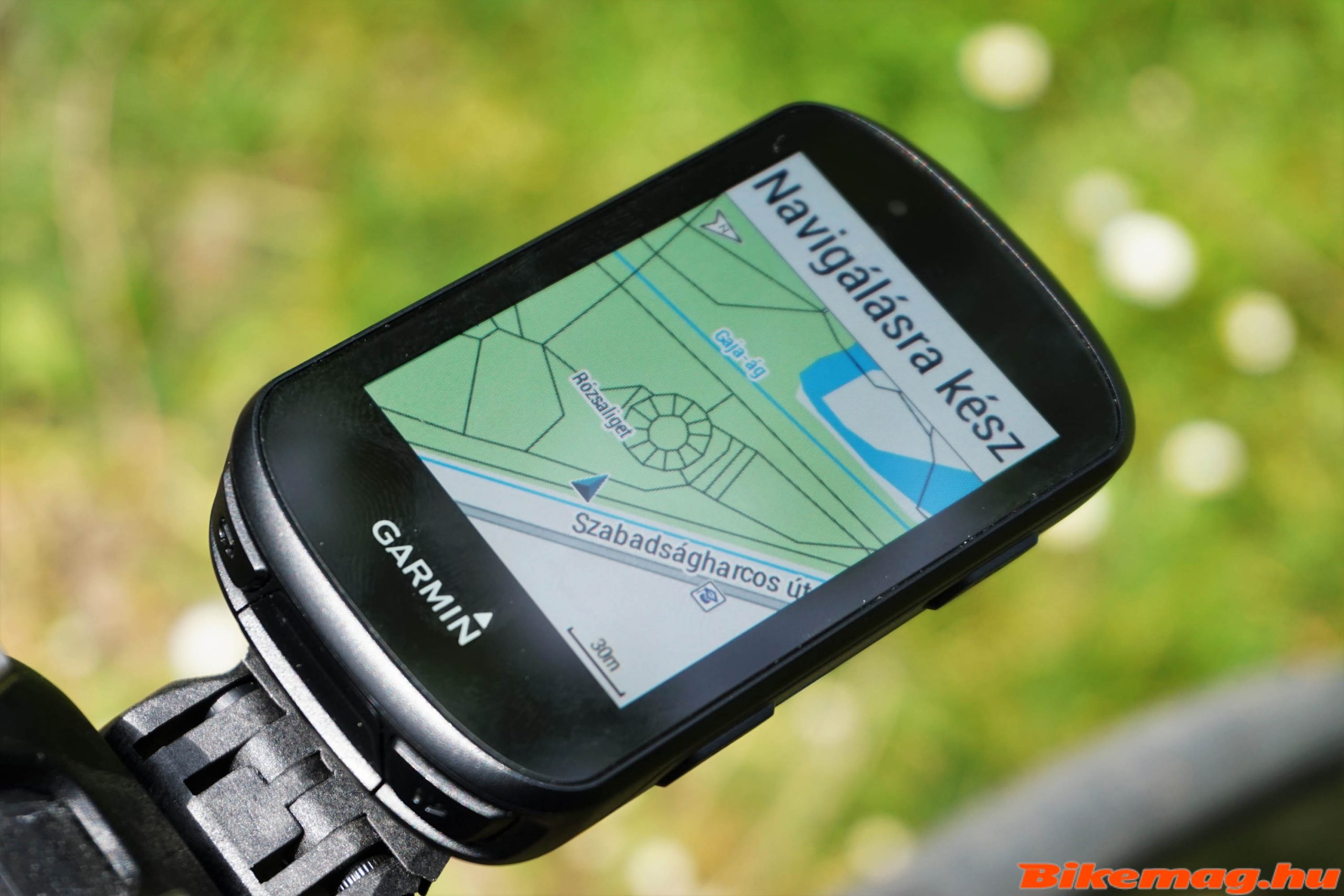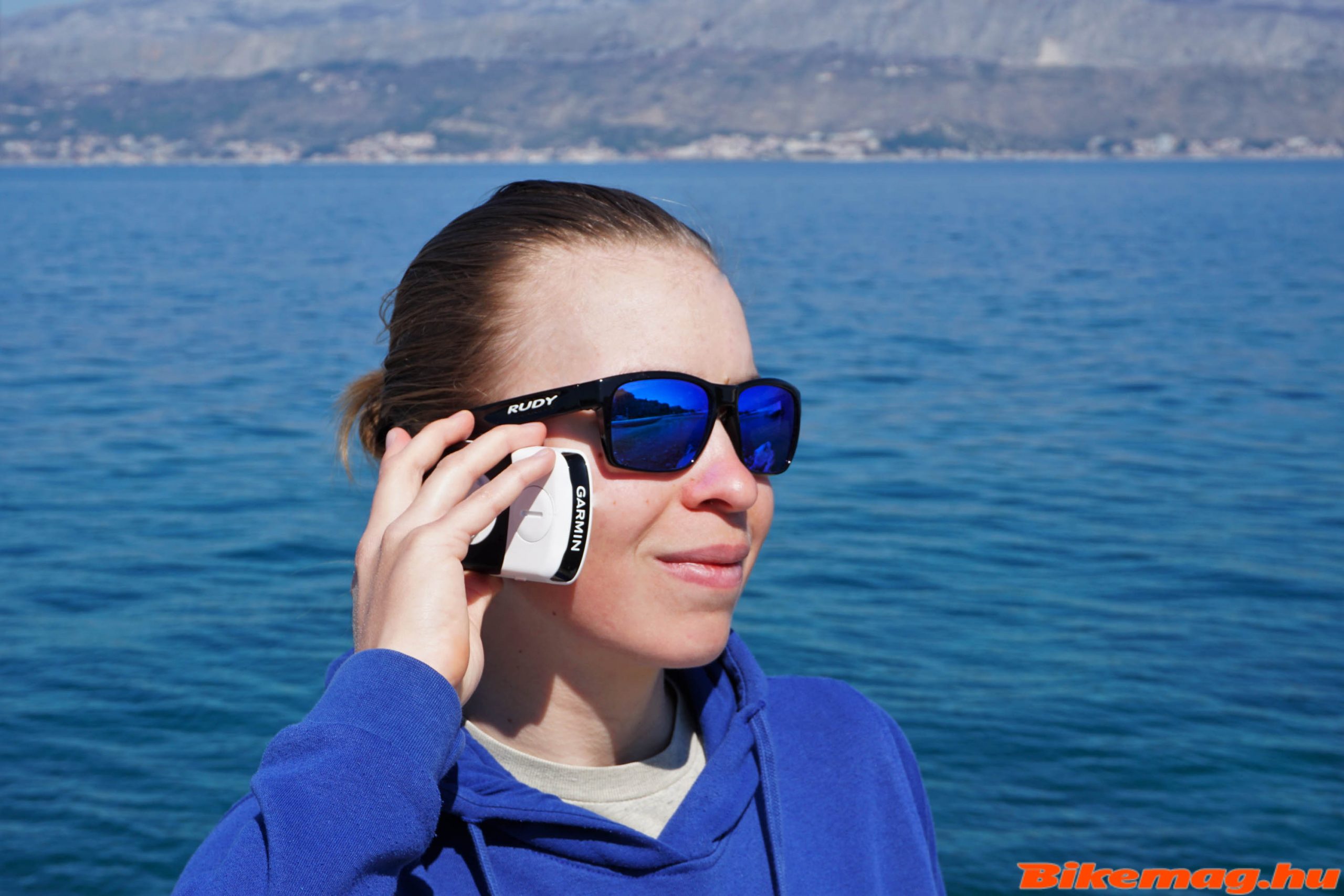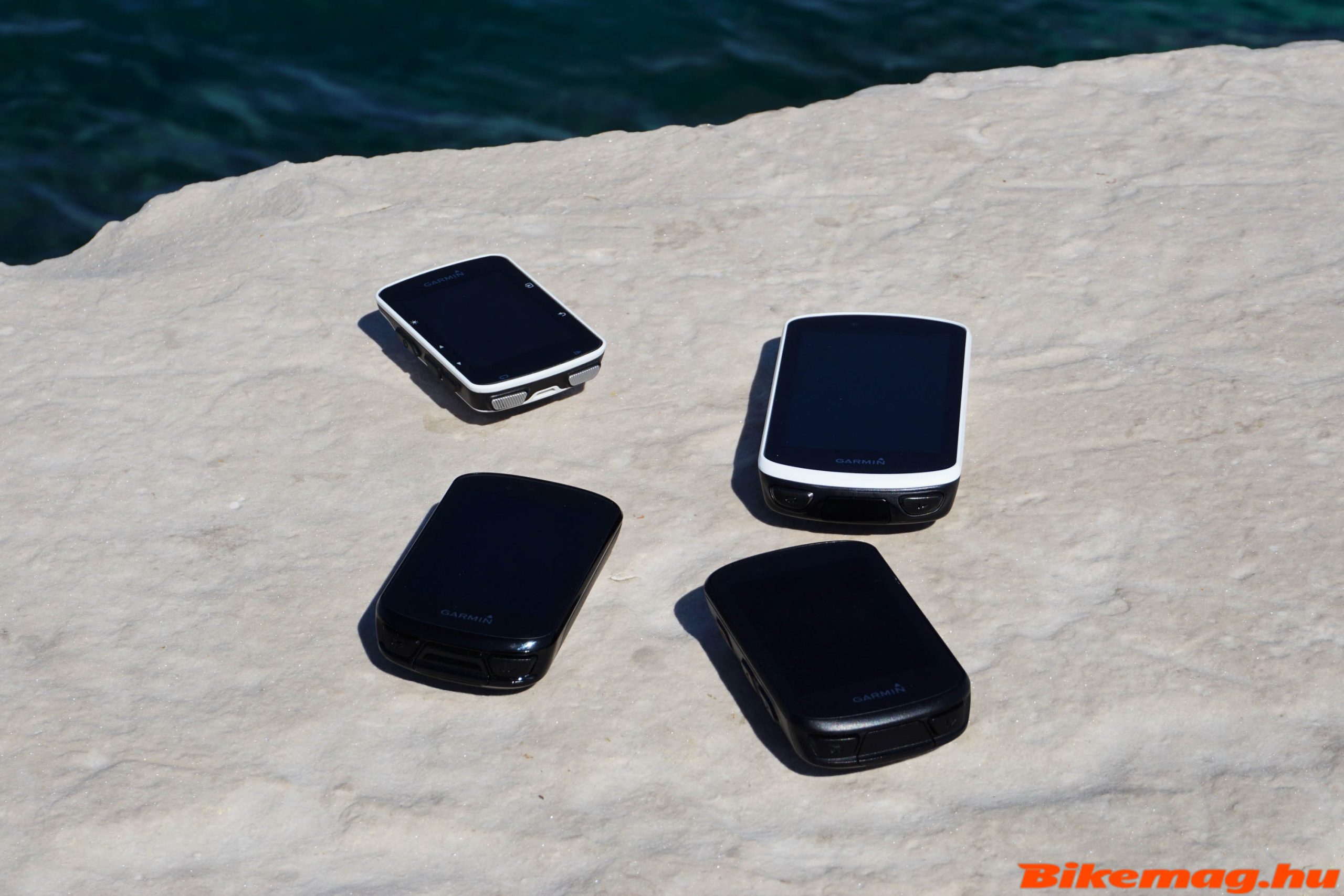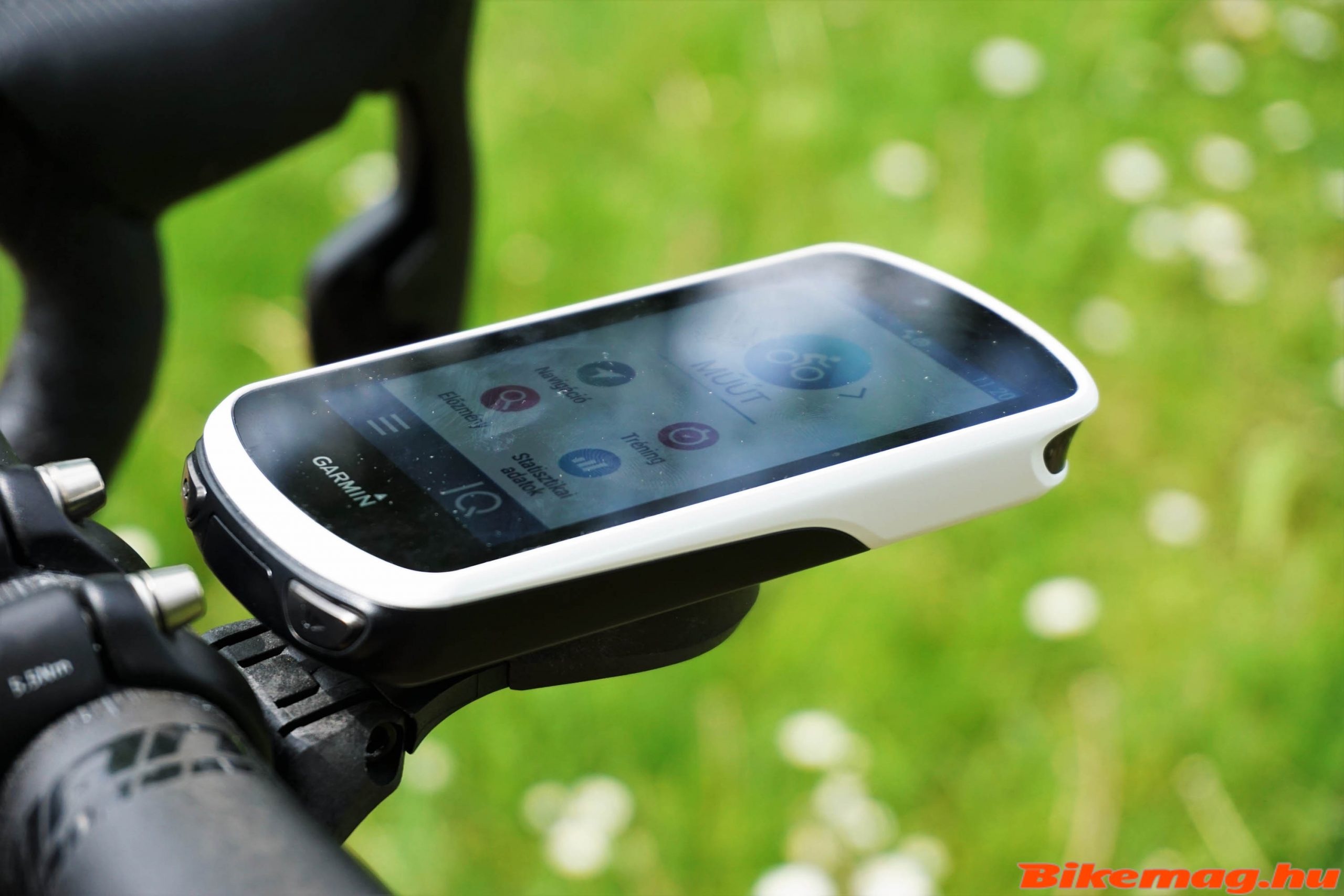Garmin is virtually a concept when it comes to GPS-based cycling devices. The American brand is renowned for offering the most up-to-date technical solutions on the market for GPS devices, though the abundant number of features makes choosing among their models quite difficult. This article aims to provide the reader with assistance in this regard based on our experience with three of the most polar units for cycling on the market: the Garmin Edge 1030 / 830 / 530 trio. Be prepared for some surprising results from the review!
I won’t bore you with history of the brand, as many are already aware, and if not, it can be found on the net even in our mother tongue. The most important information for the purpose of the review is the fact that Garmin was the first to GPS devices for cycling. Their earliest models were based on the technology they developed for the US Army, Navy and Air Force. Even if we stop here, you’ll get the jest of what level of expertise you should expect from the three GPS cycling computers in this review!
Those interested in bikes are likely to be familiar with the Edge series of Garmin devices, which have been catering for the cyclist since the beginning of GPS technology. We have two older generation Edge models in our household, and use them on a daily basis. At the moment the American brand has 5 models in their Edge lineup, namely the Explore, the 130, the 530, the 830 and finally the top-of-the-range 1030. In this review we tested the top three of the Edge roster.
The 530 model may be familiar to the readers since we recently published a review, where we compared it to the Garmin Instinct Tactical a multisport GPS smartwatch.
In that write-up I attempt to answer the question whether a cyclist should be looking at non cycling specific devices, as well as what are the advantages and disadvantages of the two different types of GPS devices.
It’s important to note that the properties and functions of the Edge 1030 / 830 / 530 are very similar, all three can be called “professional” in the sense that they have the capabilities to provide maximum support even for the top athletes of our sport. To back up this statement, the 530 is used in the highest level of competition both in training and racing. The main advantage of the top two units in the review lie in the navigation functions, which is essentially not a training related.
First let’s examine the similarities!
- GPS-based distance and speed measurement: Since these bike computers all operate using GPS signals, it’s not surprising that they need no speed sensor to measure the distance travelled and the actual speed. We should add that sensor-based measurement will always be more accurate, however I’d doubt anyone actually needs greater precision than what these models offer. So unless you really want to know your speed in the apex of a given turn to the fraction of a number, there is no need to add a speed sensor to your bike.
- ANT+ and Bluetooth communication protocol: Essentially all sensors and devices that use either ANT+ or Bluetooth can be paired with these Garmin bike computers. The vast number of data fields and pages serve to display all the information the gathered by the head units. In addition, these models can communicate with your smart phone, and sending the ride data by internet is also a possibility. From the training perspective all these Garmin models offer boundless possibilities.
- Route tracking: All three devices allow the rider to follow a route uploaded to the computer and they provide advanced map based navigation. (I’ll delve into this topic when discussing my ride experience.) The route can be planned and assembled in the Garmin Connect app, either on a smartphone or on a laptop. Alternatively we can take advantage of external route planner and saved routes.
- Smart functions: Many smart functions can be accessed when the device is paired to the smartphone (with the Garmin Connect app installed). The most straightforward is notification of incoming calls, arrival SMS or other messages on the display screen. Moreover these devices can be linked to various widgets, for example finding local trails, connecting to STAVA, etc. This portion of the functions are difficult to fully exploit since there are literary an infinite number of possibilities, which grow day by day.
- Charging, operating time, attachment: The Edge 1030 / 830 / 530 are capable of 20 hours of operation with a single charge according to the specs provided by the manufacturer. This could be achieved in absolutely optimal conditions (using smart mount, with no external sensors, all communication turned off, low background light on the display, etc.) All these devices can to be charged the same manner using USB port and are mounted to a Garmin-compatible bracket either on the handlebar or the stem.
Now let’s continue with the key differences among the three Garmin Edge models on test!
The Garmin Edge 530 and 830 are very similar regarding their appearance, the casing is virtually the same, the only significant difference being the extra button on the side of the 530. This is due to the fact that the 830 has touch screen navigation, hence altering the set-up. The 830 has some extra functions as well, such as navigation in the true sense of the word, not just basic route tracking. On the 830 we can actually enter an address, specify a point of place on the map, and the device will guide us to the location. There is also the possibility to plan a route on the 830 itself besides downloading one from the phone or laptop.
While the Garmin Edge 530 and 830 are very similar in the exterior, this cannot be said about the 1030. The latter has a much larger (76×47 mm) display compared to the 51×40 mm shared by the two other models in this review. This is a whopping 75% difference, and the larger screen size can be exploited by the special functions found only in the Edge 1030. Moreover the 1030 has a SD card slot on the back side. Regarding general cycling-related functions, there is virtually nothing extra to be found on the top-of-the-line 1030, and since the Edge 860 is the more recently introduced model – by no less than 2 years! – its hardware is more advanced, it’s a little bit faster and has some features not found in the Edge 1030. Pricewise the Edge 1030 cost 50% more than the 830.
Ride experience:
Fortunately all the three Garmin units remained with us for a longer than usual time period, so we had the opportunity to share the testing duties with my partner. There was plenty of time to try the new features making this review more genuine. I started using the Edge 530 beforehand due to the comparative review I alluded to earlier. The other two models arrived in March. When we got our hands on them, the 1030 replaced the 530 on my bike, while the Edge 830 was mounted on Niké’s handlebar. She is an experienced Garmin user since the 830 replaced her personal Edge 520. Moreover she would be doing more miles than me, especially in the spring, with an upcoming Croatian training camp. This guaranteed that the Garmin units would see a lot of hours of use!
I appreciate the size of the Edge 1030 display. All data I need can be displayed on a single page, and the numbers are also big enough to make out in dirty glasses. Yes, this is something that tends to happen while you’re out on the trails…. We made jokes about the size of the screen, as older mobile phones used to have smaller ones. The 1030 certainly extends way forward of the handlebar, but for everyday riding situations this mammoth display makes sense for the average cyclist. Navigation is via touch screen like with the 830, but since I was coming from the 530, “swiping” turned out to be an odd experience. After getting used to operating the unit, the only downside I could see was the small lag in response compared to the pressing buttons on the 530. The 1030 has plenty of functions dedicated to training on the bike. For example the manufacturer provides a “cycling dynamics” page where you can see your power in a diagram format, including separate left and right side pedaling – presuming you own a dual-sided power meter.
The route navigation function on all three models work amazingly well. It guides the rider along the road in a very professional way, telling to take turn in a given number of meters. You can also follow the route on the map. Here lies on of the greatest advantage of the Edge 1030, the colossal display. Speaking of routes, I should mention that these can be planned and uploaded in Garmin Connect on a smartphone of laptop beforehand. Moreover the rider can specify what kind of road surface he or she prefers, and the route planner does the rest. It automatically links the start location and the destination based on the information available on its map database. Unfortunately on a few occasions the Garmin Connect sent me over dirt cycle paths when I specified “no roads with heavy traffic”. If the alternative route is next to impossible to ride on a performance road bike, it makes sense to use main roads for short distances. I guess Garmin doesn’t know some things about road conditions in Hungary or our personal riding habits.
When you get back from the ride, you can download the route in just a few seconds, and these will be stored in the database for future reference. This can help to solve the problems I encountered with unsuitable road surface. In addition, the rider can plan the route in a third-party app. This is convenient, since I rarely used the Garmin software for such things. The Edge 1030 is the only unit where the user can make route planning directly in the device, but regrettably it’s more troublesome than using Garmin Connect on the smartphone, a way slower than doing this in the computer and uploading the file. This feature is for emergency situations when no other means are available.
The chief advantage of the Edge 1030 lies in its navigation and route planning prowess, since the larger screen can display a larger map with much greater resolution. It’s easy on the eyes and makes life easier if you often use these two features. Although the Edge 830 is capable of similar navigation functions as the 1030 – such as entering destination address – it lacks the screen size to best utilize them. Both will generally guide you along the quickest of most convenient route, making them full-on navigation devices.
Related to navigation is the ClimbPro feature found in all three units under review. This can be accessed when the cyclist is following a route, and ClimbPro lists all the climbs along the way. It displays the length, gradient and the graphic representation on a separate page in the menu. When we arrive at the given climb, ClimbPro is automatically launched displaying the side view of the mountain with altitude markings. It also places the rider in the graph, and reports on how much is left from the ascent. I found this feature to be quite useful, especially when the rider is following an unknown route. It would have been great to have ClimbPro when I was riding Franja Marathon, as I had no idea how is more there is to the summit.
[message_box title=”Niké’s personal experience using the Garmin Edge 830” color=”blue”]I needed a few rides to get used to the touchscreen operation from using a Garmin model with just the simple side buttons. The Edge 830 has some functions that worked differently from my older 520 unit. For example stepping back in the menu, data sheet selection, but these are minor things that can be relearned easily. By the end of the test period I become a convert, and enjoyed using the touchscreen on the Edge 830. Garmin seem to have solved the problems associated with this type of menu control. It’s fast, precise and it’s more akin to using a smartphone than previous GPS devices with more basic touchscreen operation.
This model has a lot of new functions compared to my personal Garmin Edge. I tried some of them, and see opportunities they provide. Below I’ll try to describe some of these novelties.
One of my favorite new features is ClimbPro. As a bike racer I appreciate knowing what a climb looks like when I approach it. I think amateur riders can also benefit from this type of information. The Edge 830 lets me see the graphical representation of the ascent, the gradients and the distance. ClimbPro can be set up to automatically display this page when the climb is reached, so there is no need to navigate the menu for this information. This function is godsend when you’re riding unfamiliar routes, especially abroad in a training camp. ClimbPro also categorizes the climbs so the rider has an idea what to expect without actually studying the graph. As this function is actually one of the data fields within the Edge 830, we can specify what other ride data is to be shown next to the graph.
ClimbPro is linked to the route navigation function, so it is only available if the latter is running. The navigation in the 830 is quite advanced, it’s turn by turn, just what we’d expect from the car GPS navigation. It guides the rider along the route, warning of changes in direction, dangerous sections or even tight corners. Absolutely brilliant if you ask me!
The route to be ridden can be planned beforehand in the Garmin Connect app or alternatively in the unit itself. The latter is aided by a smart function, calling upon its route database to facilitate entering the starting point and the destination.
The Edge 830 offers high level of personalization, all the data fields can be customized, defined, set up from scratch. There is nothing it can’t do in this this regard.
Thanks to the touchscreen, the number of buttons found on the unit has decreased. We’re left with the on/off, start/stop and lap buttons. In terms of functions, a long press on the on/off will take the unit into either “shutdown” or “sleep” mode, while the short press is just for shutting down. This makes turning off faster than on my older Garmin, where I had to hold the button down for 3 seconds for shutdown.
Compared to my own Edge 520 the 830 is a great leap forward, more advanced providing a number of truly useful function. I became really fond of this new gadget, sooner or later I’ll own one for sure!
[/message_box]
Touchscreen or convention buttons?
To tell the truth, I’m not perfectly satisfied with the touchscreen found on the Edge 1030. The 830 works much better in this regard, it’s faster and more sensitive. The conventional button-operated menu system on 530 is even more efficient and simply foolproof. Changing screens by way of pressing the side buttons is quicker and more logical for me, so I’d choose this over a touchscreen on any day. On the other hand the touchscreen is ideal for using the map in navigation mode. It’s much easier to scroll by actually touching the screen than pressing up/down buttons.
One thing we haven’t yet mentioned is moisture. In wet weather the touchscreen will not work as expected. On or two drops won’t make a huge difference – maybe you’ll experience a step back to the main menu. But then again, when the display is covered with moisture, everything turns into a nightmare and the unit is practically becomes useless. Pages start to flip randomly, and setting everything back is an impossible task due to lack of touchscreen sensitivity. This is the time when you have to turn off the touchscreen by pressing the “on-off” button.
Mud is another concern, especially if the touchscreen device is used for mountain biking. In order to see something you’ll have to wipe the screen quite often, but being touch sensitive, this will cause it to navigate within the menu. These situations are not welcome if you have the Edge 830 or 1030. I understand that the map function is simply crying for a touchscreen for the added convenience, but the drawbacks for me at least far outweigh the advantages. I generally use a GPS computer for training and very rarely for navigation. I feel touchscreen operation is a difficulty that no manufacturer of GPS cycling devices has an answer to at the moment.
So when it comes down to declaring a winner from the three Garmin cycling computers, for me the Edge 530 takes the prize. Other users may have different priorities, and this is why the American brand is offering several GPS models in different configurations. Best of all the 530 is the least expensive, so the value prize should also go to this device.
If you absolutely require practical navigation and route planning, then the choice will be between the Edge 830 and the 1030. Deciding between these two is a difficult one in my opinion. On one hand there is the display size which tips the scale toward the 1030, while the 830 has more advanced touchscreen operation and the cheaper price tag. I’d still go for the Edge 1030 since GPS navigation only make sense if you can clearly see where you’re going, and for cycling anything smaller than a 1030 screen is rather limiting. But that’s just my 2 cents, I’m quite happy with having a 530 on my handlebar!
Click here for a chart comparing the three units.
More information on the Garmin Edge series can be found here.
This review was made possible with the assistance of Garmin’s distributor in Hungary.

